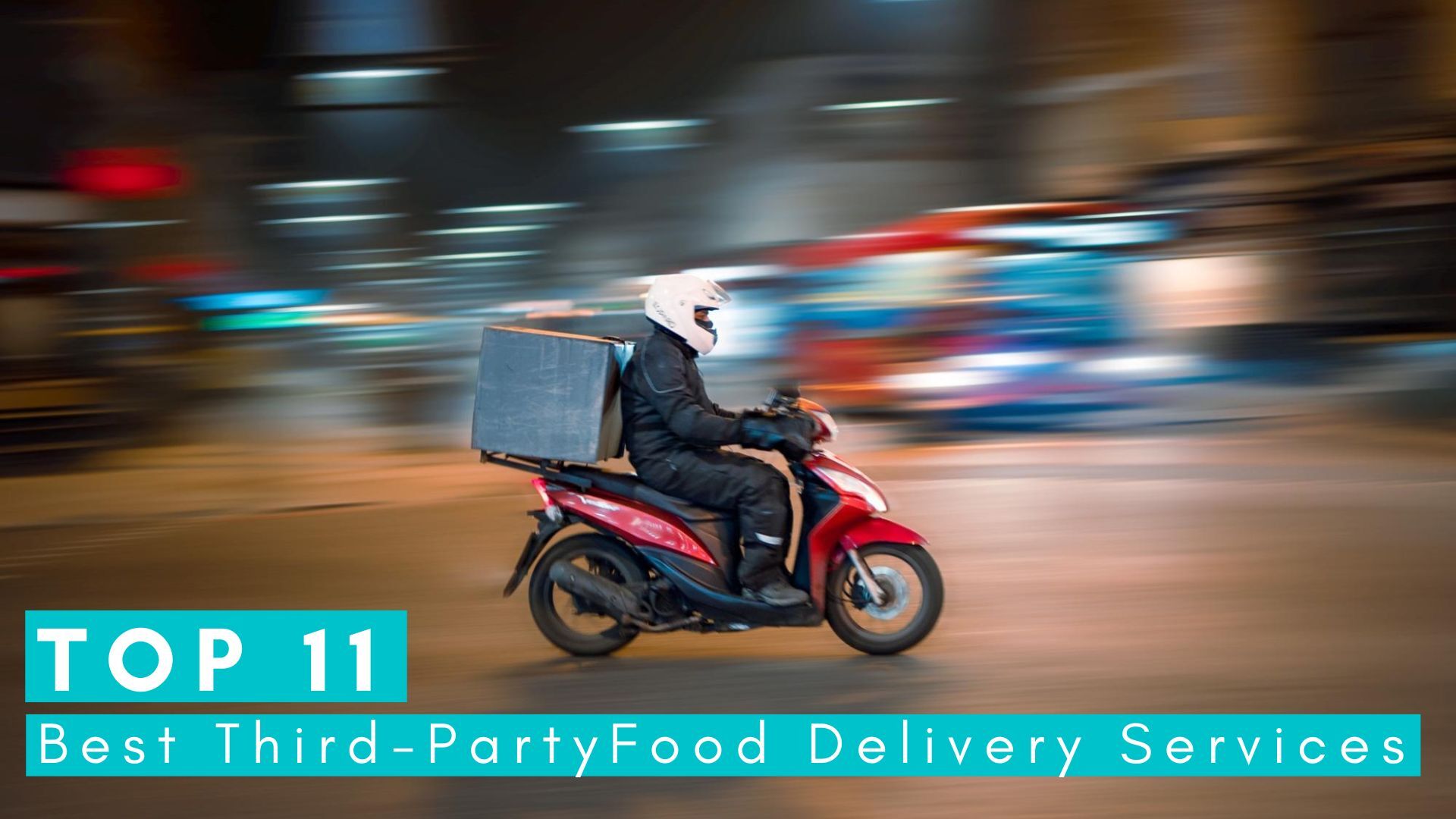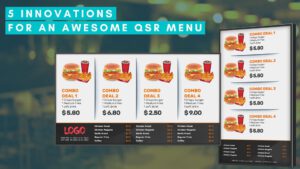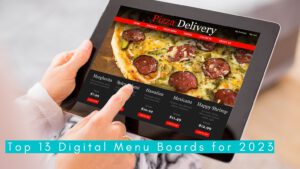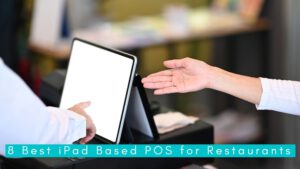No one ever expected a global pandemic to occur, keeping us inside for two years, but it sure has changed the game for various industries worldwide – some for the better.
One look at the markets, and it’s evident that consumer habits have changed.
Stocks in Netflix and Peloton spiked. Home workouts became the new normal. And banana bread was being baked like it was going out of business. Consumers’ habits have permanently changed over the last few years as people worldwide embraced indoor living.
And there was one clear winner above other industries – food delivery.
Despite significant setbacks, the food delivery industry grew stronger than ever before. The market is now worth more than $150 billion, set to rise to $320 billion by 2029. While 2020 was challenging for many businesses, food delivery saw its most significant growth in 5 years due to the pandemic.
But why have they grown in popularity? And why should QSRs jump on the hype?
Why have Third-Party Food Delivery Services had a popularity boost?
Is this a case of ‘right place, right time’ for the food delivery industry? Or is something deeper going on? Let’s take a look at why delivery services have seen a recent spike in success.
Better Brand Awareness
The rise of digital technology has reshaped the market – 42% of all food industry sales are now placed online.
Consumers are searching for more food than ever on delivery apps, so QSRs have an opportunity to ensure their brand is visible to potential customers. This opens up the market to the whole community, rather than just a small neighborhood.
Changing Expectations
While people mostly stayed at home, they also wanted to feel safe when they ventured outside. This led to the rise of touchless and contactless interactions, leading to global sessions of food delivery apps jumping 88% in 2020 and a further 43% in 2021.
Survive and Thrive
QSRs saw delivery services as a way to earn money during this difficult time while still considering their customers’ desires and government regulations. As the pandemic shut restaurants down, food delivery was an innovative way to keep business going throughout a difficult time.
Integrate Technology
Many food delivery apps can be integrated with QSRs’ POS (point of sale) systems.
It’s not only back-end tech stacks that benefit from an upgrade – new technology is making ordering even more effortless.
For example, the use of QR codes jumped by 250% in 2020.
Appeal To More Customers
By offering alternative methods of purchasing food (e.g., mobile ordering, contactless ordering, food delivery services), QSRs can appeal to customers who want a different option than the traditional onsite, in-house experience.
Customer Convenience
Food delivery is a highly convenient way for customers to access food. They don’t need to leave the house or interact with other people – it’s as simple as making a few clicks on a device. 37% of restaurants offer online ordering services, which helps them appeal to customers who don’t want to visit restaurants for convenience, hygiene, or speed of service.
Top 11 Best Third-Party Food Delivery Services
The rising popularity of this industry is proving to QSRs that partnerships with food delivery companies can be a successful business move. But which are the best food delivery platforms out there? Here’s everything you need to know about the top 11 food delivery services.
1. Uber Eats
Uber Eats is a recognizable name in the food delivery industry. It has a massive reach across the US and supports over 600,000 restaurants in over 6,000 cities. UberEats’ extensive global user network makes it a good choice for QSRs with restaurants in multiple states or countries.
Its platform is easy to use from both a QSR and a customer’s point of view.
The user interface is easy to navigate, and in the back end, it integrates directly with QSRs’ POS systems. You can also customize and create your own POS integration with Uber Eats.
2. DoorDash
Responsible for 45% of all food delivery orders in 2020, DoorDash operates in most major cities in the US.
In 2021, it went public on the New York Stock Exchange at $72 billion. DoorDash is tech-focused and is developing an AI system with the goal of perfecting delivery. The AI gathers data on every aspect of the delivery process to suggest more accurate delivery times with fewer errors.
DoorDash is a good choice for QSRs with a similar culture of technological innovation because it has several POS integrations.
Plus, its merchant platform gives businesses complete visibility over their sales. Another benefit is its reach – DoorDash delivers grocery, alcohol, and convenience orders and has over 25 million users.
3. GrubHub
As one of the original players in the food delivery industry, GrubHub was launched in 2004 to develop hassle-free food ordering. Now a subsidiary of Just Eat, it has over 31.5 million global users and holds 20% of the market share in the US.
GrubHub’s loyalty scheme is one of the main draws for end users. Customers earn 20 points for every dollar they spend, which they can track in the GrubHub app and cash in for discounts.
There is also a calculator to help QSRs determine their projected monthly spend and multiple POS integration options.
4. Postmates
In 2019, Postmates was merged with Uber in a $2.65 billion acquisition and is now responsible for 10% of all US online food deliveries.
It has 10 million monthly active users, less than some other food delivery companies, but it still partners with over 600,000 merchants thanks to its connection with Uber. It has unlimited free delivery for Postmates members and operates in most major US cities.
Although Postmates is a smaller business than other offerings, it’s still a viable choice for QSRs because it benefits from Uber Eats’ massive reach and tech prowess.
5. Caviar
Similar to Postmates, Caviar is a smaller business that has benefitted from a big-name acquisition.
DoorDash acquired Caviar for $410 million in 2019. Now, the service benefits from DoorDash’s DashPass subscription model for customers.
Its focus is to partner with the ‘coolest and best’ spots, so it has access to lesser-known restaurants that might be outside of their parent company DoorDash’s remit.
If your QSR is a smaller, more niche business, you’ll likely be the type of restaurant that Caviar’s users target.
6. Deliveroo
Perhaps a more prominent name in the UK than the US, Deliveroo pioneered the platform-to-consumer food delivery concept in the UK and currently has 8 million active users.
They were founded by an American entrepreneur who was shocked by the lack of delivery options for quality restaurants in London.
Now, Deliveroo has a significant presence in Western Europe and Hong Kong. Like DoorDash, Deliveroo has an AI-driven algorithm that ensures the efficiency of deliveries.
In 2020, the company doubled down on its partnership with Amazon, offering free delivery options for Amazon Prime members. There’s still a lot of potential for Deliveroo, and it’s a good choice for QSRs with entities in the UK and Europe.
7. Seamless
Seamless’ website might look a little familiar… that’s because it’s owned and operated by GrubHub. Its users have access to GrubHub’s appealing perks and loyalty program, plus their national reach across most major US cities.
Seamless is no longer a standalone brand in the US, so the best bet for QSRs is to simply go through its parent company GrubHub.
8. Drizly
Drizly is different from other delivery service offerings because it specializes in alcohol delivery from local retailers. Users can choose beer, wine, or liquor and expect it to arrive in under an hour.
Drizly supports popular POS integrations such as Lightspeed, Vend, and Clover. It considers itself a technology company, not a delivery service, and has an easy-to-use app and website.
Although alcohol is not a focal point for many QSRs, Drizly’s concept is still one to watch.
9. Rappi
As a big player in the South American market, Rappi has over seven million users across nine countries, including Colombia, Brazil, Mexico, Argentina, Chile, Uruguay, Peru, Ecuador, and Costa Rica. It has extended its delivery service from food to groceries, pharmacy goods, and general items.
Thanks to its backing from SoftBank and a partnership with Banco Davivienda, Rappi recently announced its own digital banking service, RappiPay.
Rappi has already cemented its success in South America, proving to be a technology-focused business with its foray into banking. This makes for an excellent choice for QSRs with entities in South America – or those looking to expand.
10. Delivery Hero
German-based Delivery Hero has grown its presence to over 50 countries across Europe, Asia, Latin America, and the Middle East. It partners with 500,000+ restaurants and has reported year-on-year growth of a whopping 31.2%.
Delivery Hero runs its delivery-only supermarkets called Dmarts, which allow it to deliver groceries directly from the warehouses in less than 15 minutes.
With its knowledge of food and grocery delivery and its large global presence, Delivery Hero is a reliable choice for QSRs with a global reach.
11. Just Eat
Responsible for 50% of all food deliveries in the UK and Europe, Just Eat bolsters success with acquisitions and expansion into Australia, Brazil, and Canada.
In June 2020, it acquired GrubHub, a deal which gives it an 18% stake in the US food delivery market.
Unlike other big players, like Uber Eats and Deliveroo, Just Eat doesn’t handle or deliver most of its orders. Instead, it has developed innovative automation solutions such as its Just-Connect box, which connects merchants directly to the Just Eat platform.
Boasting 99 million active users globally, partnering with Just Eat seems like a no-brainer for QSRs. Not only is the Just Eat name instantly recognizable, but it has already partnered with some major QSRs, like McDonald’s and popular UK-based bakery chain Greggs.
With their success growing and further expansions, Just Eat could be one of the leading food delivery service options to watch.
One Step Further: Implementing a Tech Stack
Across the food delivery industry, one thing’s for sure – customers choose delivery options for speed and convenience.
The pandemic fuelled the rise of online, contactless interactions, which were spearheaded at first by hygiene reasons. But digital options have lingered long after masks and hand sanitizer, as have new ways to find and consume food.
Slow, manual, fussy ordering no longer cuts the mustard. One way QSRs can stay ahead of the game is to ensure that their tech stack enables the fast, convenient digital experiences that modern consumers expect. An efficient tech stack can include seamless integration with third-party delivery apps, automated kitchen processes, and AI-led order taking.
For example, our conversational AI solution, Auto, easily integrates with your existing tech stack and POS system to automate your order taking.
Our AI-enabled voice technology takes over from your workforce by acting human, understanding complex menus, and upselling. It reduces time in line and improves the speed of service because, well, AI never gets distracted, bored, or tired.
The two-way communication with your POS system transfers orders to your kitchen processes and helps you understand when items are out of stock. A cutting-edge tech stack has a positive knock-on effect on QSR efficiency.
It also helps the process for delivery drivers as it speeds up order taking and pickup and streamlines their deliverables, positively impacting their business.
How AI Can Help QSRs Reach More Customers Faster
More users are logging into food delivery apps to access their favorite restaurants directly. Customer expectations constantly change, and QSRs must recognize these trends to stay competitive.
That’s why Auto is designed with your customers in mind.
Auto provides the digital-first, quick service experience you know and love, whether a consumer or delivery driver. Not only that Auto helps with drive-thru order taking but it also helps with delivery pick-ups. By automatically collecting your name and order to directing you to the collection window, Auto streamlines the process, shaving 20-30 seconds of employee time per pick-up order. To learn more about how Auto can help you start increasing accuracy and speeding up your orders, drive right in.

















